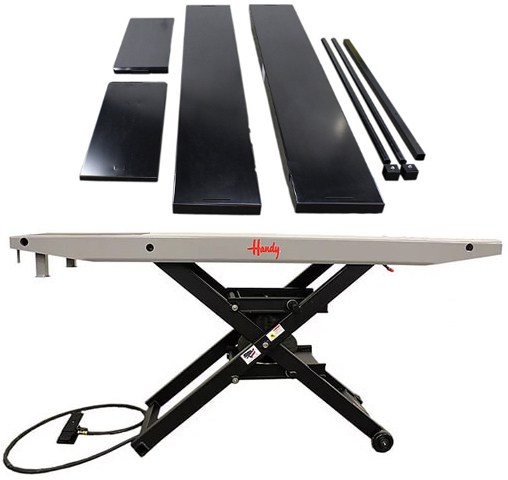-
Posts
19 -
Joined
-
Last visited
-
Days Won
1
David Peterson last won the day on February 11 2019
David Peterson had the most liked content!
Recent Profile Visitors
The recent visitors block is disabled and is not being shown to other users.
David Peterson's Achievements
-
David Peterson changed their profile photo
-

Ignition fuse blows on 1999 Arctic Cat 500
David Peterson replied to Bruce Madsen's topic in Arctic Cat ATV Forum
Find the orange wire other end, where does it go. Disconnect it and see if the short goes away. If it does keep going, if it doesn't then between the fuse block and where ever it ended is your short. With out seeing the wiring diagram this is the only help I can give you at the moment, sorry -
David Peterson started following Honda Rubicon battery issues , Ignition fuse blows on 1999 Arctic Cat 500 , Yamaha BRUIN 350 Water in tank? and 7 others
-
Make sure the vacuum lines are also clear of water too
-

1988 suzuki quadrunner 250cc 2x4 (LT-F250) not starting
David Peterson replied to mmmPUDDIN's topic in Suzuki ATV Forum
Suggestions. go back to basics. check the compression, spark, if the compression is not right the start there, find out why. Check the valve clearance's, check timing. if all that's not right it doesn't matter about everything else. One thing I have found through out the years on spark plugs is, if the item is a Japanese type import use nepond denso or NGK plugs only. Champion spark plugs don't play well in them. Yet champion plays well in small lawn and garden equipment. I had a Yamaha bike that had two spark plugs holes. Put brand new champions in it and it wouldn't run for nothing, put an old worn out ngk in it and it ran, Put a champion in one and ngk in the other and the ngk worked with out any problems, Champion didn't run at all. Tried more than one and from different vendors too. That is just one instance I've had among many, so that's why i say that about spark plugs. If all that's good then move to the fuel side of things, Suzuki uses vacuum operated fuel pumps and in some a vacuum operated fuel petcocks. A leaking diaphragm in any of those can dump fuel straight into the engine. Making you think the carb is the issue. Clamp off the lines, check for fuel in the lines. I do see these items fail more than you think, more so on the older atvs. Trash getting to and into the fuel pumps kills the diaphragms. Once you get it to run, change the oil before you test ride it. the gas will damage the bearings and the centrifugal clutch. . Oil is cheap compared to the damage. Hope some or all of this helps. -

Anyone out there using a lift table?
David Peterson replied to a topic in Northeast ATV & Off Road Forum
Got blessed with a Handy 1200 (air) with the side extensions not only for our atv's, ridin mowers, etc. Also have a couple of scissor jacks and hyd jacks. I'm too old to be crawling on the ground or floor. Got it for a great price used. It has truly been a blessing. It's also used for a great many other projects. -

1996 Suzuki King Quad 300 Smokes [VIDEO]
David Peterson replied to crochet homemade's topic in Suzuki ATV Forum
Frank has a good idea of checking the valve seals. I had a Suzuki quad 300 that would smoke at times. The compression checked out good, leak down test showed acceptable. Spark plug showed good as well. What I found was the exhaust valve guide was worn just enough to let some oil get passed it and get sucked into the exhaust port. The heat from the exhaust burned the oil in the exhaust pipe. Found the exhaust port wet with oil. The exhaust valve is covered in oil on the head when running. By the time you replace the valve and valve guide and seal. You could have bought a good used complete head cheaper. So look at your spark plug, if it has oil do a compression test and leak down test. If all of those are ok, remove the exhaust pipe and look for it to be wet with oil. -

HELP! Can’t start 1988 Honda Fourtrax 300 ATV!
David Peterson replied to Steven Workman's topic in Honda ATV Forum
Steven, first thing I would suggest is getting the starting issue done first. you have to get 12vdc to the key switch. That 12vdc comes from the battery to the solenoid. Then through the solenoid usually via a connector through the wiring to the key switch, Then when you turn on the key switch on. it sends that 12 vdc every where else it needs to go. So check the key switch for 12vdc. If you don't have it there go back to the solenoid and check both sides of your fuses. Check you battery ground too. I'm not looking at a wiring diagram for your fourtrax other wise I could give you the wire colors. Bottom line no power to the key switch nothing else will work. Get it to crank first then look at the carb/ fuel issue. -
Check to see if you have a vacuum operated fuel petcock and the fuel pump diaphragm. A leak in either or both of the diaphragms will let fuel by pass the carb and go into the engine. They will make you think you have a bad carb. If have excessive fuel in the cylinder be sure to check you oil for fuel too.
-

HELP! Can’t start 1988 Honda Fourtrax 300 ATV!
David Peterson replied to Steven Workman's topic in Honda ATV Forum
check to see if your getting 12 volts dc to your key switch. 12volts dc comes from the battery to that switch. -
If your switch's, reverse and neutral are like most. the body of the switch is ground. meaning you will only have one wire going to the switch, So you may have a single wire or two wires. But the color of the wire is mainly what you want to look for. Would also suggest you use you ohm meter to check the switch body to any grounding point on the motor case for zero ohm's (direct short). I've even taken a wrench and moved those single wire sensors to make sure there isn't any corrosion between them and ground.
-

How 4-cycle ATV Engines Work Discussion
David Peterson replied to JacobSlabach's topic in General Talk - Anything Goes!
Over head cams can be a higher reving engine, less vibration. Less valve floating at higher rpm. Fewer moving parts too. A lot of European racing engines use the overhead cam designs. They are long distance, high reving engines. Bad part is in (what is called interference engines). Valves and pistons can hit each other due to clearance problems if and when the chain or belts break. Things go boom faster when things fail. In block cams the gears use horsepower to drive them, The valves can and do float at high rpm, due to the long distance between the cam lobs and valves. Yes the springs do help close the valves but the pressure from the rockers, push rods and lifters has to be gone. The rocker arm nuts also have a slight tendency to back off (loosen) on in cam blocks after a while and require periodical adjusting in high reving engines. Over head cam is a better performance engine and smaller size over all too (lighter weight). The small engines world (lawn and garden) has started going to the cam in block over head valves with push rods configurations. Yes over rev one of them and you drop a push rod or bend it. Some have also gone to hydraulic lifters but have problems due to lack of oil changes. Thicker oil doesn't drain quick enough for the lifter and keeps the valve open too long. either shutting down the engine or bending rods. Over head cams use the head body for a bearing, trash and too thick oil will cause cams to seize real quick. So they went to in block cams. Even more bad news is they are adding more and more electrical stuff to these engines. Take you typical automotive engine cut it down to 2 cylinders and leave the rest. If you don't know how that stuff works it's best left alone. I don't want anyone to think I'm bragging but I do hold certs in both automotive and small engine repair. Have also raced automotive. My certs don't hang on the wall they are in a binder on a shelf. -
Lower left hand side towards the bottom of the motor. Look for the g/l and black wire. The netural switch is also near there too.
-
Handy makes a great air lift table good for 1000lbs with the side extensions. Helps save the old back and knees. Mine gets used for all kinds of projects and service work. Found mine on craigslist cheap. Yes they cost but you can find them cheaper, But get hurt one time or damage your ride and the fill cost of this looks cheap, real cheap Better safe than hurt and sorry with expensive medical bills too boot....
-

Honda Rubicon battery issues
David Peterson replied to JacobSlabach's topic in General ATV Discussion
Your battery could also be weak. How long did you wait before checking the voltage? Usually wait about 1 to 2 hours and check the voltage again disconnected. You can also check the battery for a weak cell with your volt meter. Do this carefully and safely. Remove the caps, negative meter lead to negative post. Take the positive lead and slowly put it in that cell. DON'T FORCE IT IN. You just want to get it in the acid. Check your readings. If all cells are about the same then the battery is ok, If you have one cell thats shows a real low voltage that's usually a bad cell. A light coating of regular grease on the battery terminals helps prevent corrosion, makes using the screws a lot easier to remove too. old time trick Battery's that sit for long periods of time develop a memory and won't fully charge. Get a good battery charger that desulfides the battery. Put it on for 24 hours and that will remove the battery's memory. I use one myself and once a year I put it on our battery's and leave it for 24 to 36 hours. I haven't had to buy a battery in quite a mumber of years, We have battery's all over in lawn and garden, atv, vehicles and gate opener's. -
Frank is correct about the wiring being tied together with brass rings. Disconnecting the reverse switch connector should also turn off the reverse light. If you have 12 volts dc on the reverse light you should also have it at and through the neutral light as well ( provided the bulb is good). If you disconnect the reverse connector and the light goes out that's good. Grounding the skyblue wire should turn on the neutral light provided the bulb is good.
-
Brown red wire from ign switch 12vdc. brown red wire to indicator lights. From indicator lights, Rev G/L wire (green/blue) to rev switch to ground. Neutral sb (sky blue wire) to neutral switch to ground.








